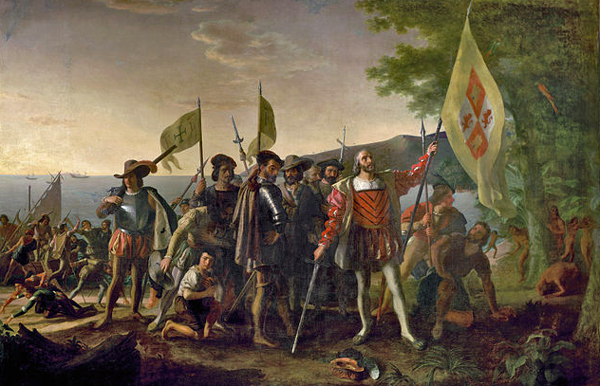C
Christine Lin
Isabela Padilha
C
Christine Lin
Isabela Padilha
AP European History 🇪🇺
335 resourcesSee Units
Effects of European Expansion
Spain & Portugal
With Spain and Portugal beginning to establish colonies overseas, many other European countries became determined to do the same, causing rivalry between the countries🌊. The Spanish established colonies in the Americas, the Caribbean and the Pacific which made Spain the dominant state in Europe in the 1500s. Portugal also owned a significant part of the territory in the Americas, and later acquired lands in Africa, Asia and Ocenia as well. France, England and the Netherlands later established colonies and trading networks that competed with Portuguese and Spanish dominance in the 1600s.

Dutch
The Dutch began exploring in the early 1600s and colonized New York, thanks to Henry Hudson and his exploration efforts. Their power led to the creation of the Dutch East India Company in South Africa, resulting in the Dutch taking over many of Portugal’s trading posts.
The Dutch were able to gain power due to political, economic, religious, and societal means. The Dutch had autonomous provinces which were governed by merchant oligarchies, the largest merchant marines in Europe, spread Calvinism, and their religious and intellectual tolerance allowed for economic growth to prosper.

Image Courtesy of Legends of America
The French had three motives behind their explorations: fish, fur, and faith. The French colony of Haiti established profitable sugar plantations with the use of African slaves. They also went to India but were unable to defeat the British and were forced to leave after the Seven Years War.
The Conflicts
Here are some of the most popular/important conflicts that happened between these European nations over colonization:
- Asiento - Contract signed by the Spanish crown with a private company that allowed the selling of African Slaves in their colonies. Although the contract was initially made for Portugal, this right was later expanded to many other European nations. The Asiento system enslaved several Africans and increased economic competition between these nations.
- War of the Spanish Succession - This conflict began with the death of King Charles II of Spain, who had no heirs, causing a succession crisis. Other European nations feared the control of France over Spain, since Charles had bequeathed the grandon of King Louis XIV of France the throne. Other European nations that opposed Philip's taking of the throne engaged in the fight. It was ended through the Treaty of Utrecht and recognized Philip and the King of Spain.
- Seven Years' War - This conflict was fought between most major countries in Europe, and it was sparked by conflicts faced on the domination of Europe and tensions in colonial territories. It was ended by the Treaty of Paris.
- Treaty of Tordesillas - Treaty that settled land conflicts in South America between Portugal and Spain. The treat laid out a line on the map that separated the land that was owned by Portugal (the east) and by Spain (west of the treaty line).
Browse Study Guides By Unit
🎨Unit 1 – Renaissance & Exploration
⛪️Unit 2 – Reformation
👑Unit 3 – Absolutism & Constitutionalism
🤔Unit 4 – Scientific, Philosophical, & Political Developments
🥖Unit 5 – Conflict, Crisis, & Reaction in the Late 18th Century
🚂Unit 6 – Industrialization & Its Effects
✊Unit 7 – 19th Century Perspectives & Political Developments
💣Unit 8 – 20th Century Global Conflicts
🥶Unit 9 – Cold War & Contemporary Europe
📚Study Tools
🤔Exam Skills
👉Subject Guides

© 2024 Fiveable Inc. All rights reserved.